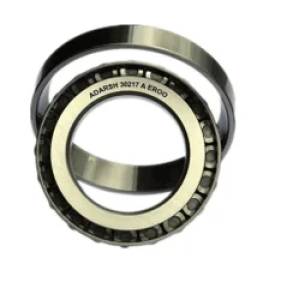Description
Tapered Roller Bearings: Precision and Durability for High-Load Applications
Tapered roller bearings are a type of rolling-element bearing that uses tapered rollers to support both radial and axial loads simultaneously. Their unique design provides exceptional performance in applications demanding high load capacities and stability, making them a crucial component in many industries.
Understanding the Design:
Unlike ball bearings that primarily handle radial loads, tapered rollers are conical in shape. This geometry allows them to distribute loads effectively along the bearing's contact angle, resulting in higher load-carrying capacity and improved stability under combined radial and thrust loads. The rollers are guided by a cone-shaped inner race and a cup-shaped outer race, ensuring smooth and efficient operation.
Key Advantages of Tapered Roller Bearings:
- High Load Capacity: Tapered roller bearings excel at handling both radial and axial loads, making them ideal for applications with heavy-duty requirements. The larger contact area of the tapered rollers distributes the load more effectively than other bearing types.
- High Speed Capability: While load capacity is a primary benefit, many tapered roller bearings are engineered for high-speed operation, particularly those with optimized geometries and materials.
- Self-Aligning Capabilities (in some designs): Certain types of tapered roller bearings offer some degree of self-alignment, compensating for minor misalignments in the shaft and housing, improving performance and lifespan.
- Durable and Reliable: Constructed from high-quality materials like hardened steel, tapered roller bearings are known for their durability and long service life, even under demanding conditions.
- Wide Range of Sizes and Configurations: Tapered roller bearings are available in a vast array of sizes and configurations to accommodate diverse application needs, including single-row, double-row, and four-row designs.
- Easy Maintenance (in some designs): Certain designs allow for easier maintenance and replacement of components compared to other bearing types.
Applications:
Tapered roller bearings find applications across a wide range of industries including:
- Automotive: Wheel hubs, transmissions, differentials
- Industrial Machinery: Conveyors, gearboxes, rolling mills
- Aerospace: Landing gear, rotor systems
- Agriculture: Tractors, harvesters
- Wind Turbines: Gearboxes, main shafts
- Heavy-duty equipment: Construction machinery, mining equipment
Selection Considerations:
When selecting tapered roller bearings, consider the following factors:
- Load Capacity: Determine the expected radial and axial loads.
- Speed: Specify the operating speed requirements.
- Accuracy: Choose the required level of precision for smooth operation.
- Operating Environment: Consider factors like temperature, lubrication, and contamination.
- Mounting: Ensure compatibility with the mounting arrangement.
Specifications (example - actual specifications vary widely):
- Bore Diameter: [Range of available bore diameters]
- Outside Diameter: [Range of available outside diameters]
- Width: [Range of available widths]
- Contact Angle: [Angle of roller taper]
- Material: Typically high-carbon chromium bearing steel
Choosing the Right Tapered Roller Bearing:
Selecting the appropriate tapered roller bearing requires careful consideration of the specific application requirements. Consulting a bearing specialist or referring to manufacturer catalogs is crucial to ensure the proper selection for optimal performance and longevity. Improper selection can lead to premature failure and potential safety hazards.
